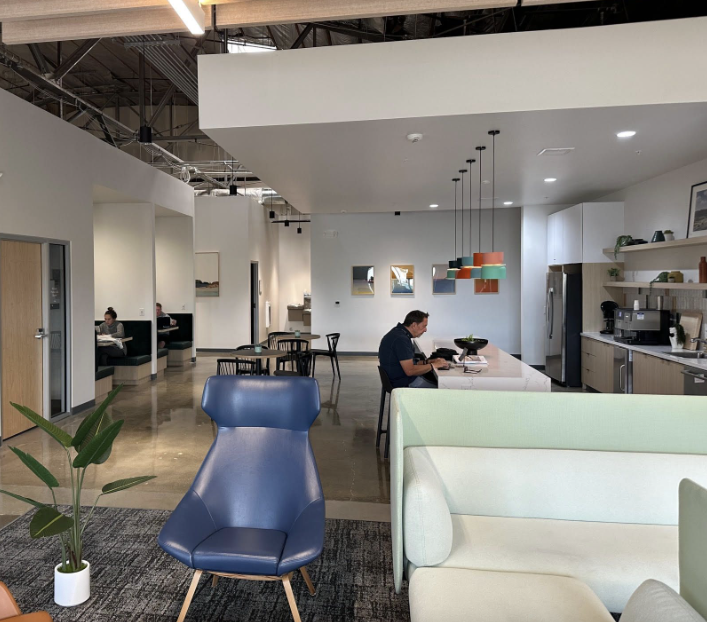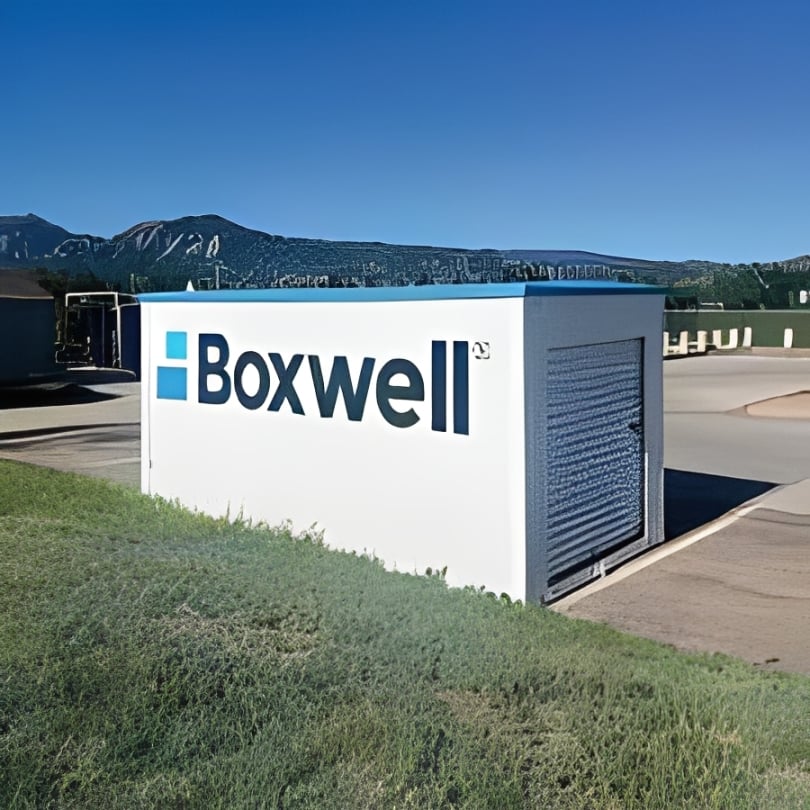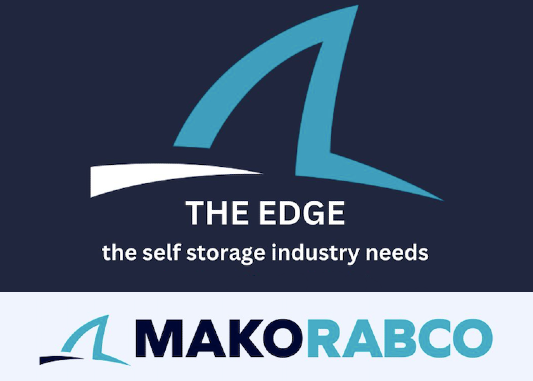RV & Boat Construction Costs
Boat and RV storage has morphed and modernized through the recent years. What was simply open space parking has become polished, bright colored facilities with clubhouses and personal cleaning services. Due in part to the growth of homeowners associations regulating what can or cannot be parked on residential streets, to Americans buying more luxurious “toys,” the demand for safe, secure storage has risen substantially.
Overall, the economic growth of the self-storage industry has been in a boom for the past six-plus years. In an article written by John Eagan, August 23, 2019, on Sparefoot.com titled, “With new investor, Mako Steel eyes new East Coast outpost,” according to Caesar Wright, president of Mako Steel, “While acknowledging that some geographic pockets continue to grow while others are oversaturated, Mako Steel doesn’t expect a development slowdown in its key markets over at least the next 12 to 18 months.”
When you combine the above statement with the RV Industry Association’s announcement on May 24, 2019, that, “Nearly 25 million Americans to travel in RVs this spring and summer,” and according to Statista, a market data collection institute, “The total value of recreational boats sold reached over $3.6 billion (U.S.) in 2016,” you’ll find that the demand for boat and RV storage is as strong as ever. So, the next question is, “How do developers profit from this?”
An investor looking at boat and RV development opportunities will have many questions to answer in order to determine the keys needed to build a successful boat and RV storage project.
Ultimately, it starts with the basics: Find the right parcel, for the right price, in the right market, then build the right project. Sounds simple enough.
Pricing Parcels
First, let’s investigate finding the right parcel. You’re likely thinking flat and square. While those are characteristics of an “easy” build, when it comes to boat and RV storage, it is important to have enough open space to build a successful project. Most boat and RV projects are situated on seven to 10 acres. Within these acres, the buildable square footage is about 35 percent to 40 percent per acre. With seven acres, at this coverage ratio, a developer is looking at a 106,000-plus-square-foot project.
In the self-storage industry, developments of this size typically occur in rural areas where the asking price of land would be lower than in an urban or even suburban environment. Quite often, it has become too expensive to develop a project that requires a large parcel of open space in a metropolitan area. Instead, many developers look for land on the outskirts of town, near a major highway, where drivers pass by on the way to and from their travel destination. Such locations come at an economical price, in turn creating a viable ROI.
But we are here to examine costs and profitability associated. Therefore, the important question a developer needs to ask is how does one determine the economic profitability of the project? It starts by weighing the purchase price of the large parcel of land and measuring it against its potential development opportunities.
In the project’s due diligence stage, this is the time to create a preliminary budget. A good place to start is with market research. Traditional storage would begin with an investigation on the number of competitive units within a one-mile to three-mile radius, the rental price per unit, and occupancy rates for each competitor. This helps determine what size and quantity of units to build for your facility. However, many times, the size of the radius to be investigated, when it comes to boat and RV storage, can be different then its traditional self-storage sister. Ultimately, you must know your competition and get a feel for the supply and demand in your community.
After determining what size units should be built, the developer can evaluate the projected income of the facilities site based on the monthly rental rate multiplied by the number of units per type. This will get the total annual expected rental income. Measure this against your projected expenses, such as the mortgage on the land, taxes, insurance, operations, etc., to understand the annual net value expected.
According to Jo Beth White, owner of Development Services, Inc., “By the time you are through lease-up, you should be at a positive cash flow; if you are not, then you’ve either paid too much for land or your construction costs were too high.” So, if your initial analysis looks like the project might reach this threshold, it is time to take the next step and hire a professional feasibility consultant who specializes in boat and RV storage analyses.
A formal feasibility study is significant in settling the risk versus reward factor. Boat and RV rental rates are frequently much lower than traditional storage. This factor, in conjunction with purchasing large plots of land, means it can be difficult to pencil out. Jo Beth White states, “To make it work, a developer must have economy of size, where there are enough rentable units to surpass costs.” Therefore, if the demand is there and the land is viable for development, plus the project can attain a feasible economy of scale, you will have found the right project.
Another considerable factor in determining the project’s budget is the parcel’s need for off-site improvements, excavation, and site work. Does the topography need grading? What water drainage plans and regulations are in place? Do utilities need to be brought in? What type of soil mitigation will be required? These are just a few things to discuss with professionals during the due diligence process. According to Jeremy Maynard, senior project manager at Perlo Construction, a general contracting company, states, “The main factor that drives up construction cost for self-storage is the existing site conditions. If the site is not flat, has contaminated soils, or has ground liquefaction, these can add tremendous cost to the design and site improvement cost. As land becomes harder to find and poor sites remain available, we are seeing a rise in the site improvement areas.”
A visit to the site’s local planning department or city/county’s jurisdiction is necessary to learn the zoning requirements and possible limitations of the parcel’s site. With this information in hand, consulting a civil engineer about site considerations is essential. Omitting this step and not having the proper civil engineering or geotechnical reports can greatly affect the overall budget. If extreme land remediation is necessary, it can possibly drive up the cost of the project to the point where it doesn’t financially make sense.
Loans And Budgets
Upon determination of market demand and site limitations, if you are still smiling and the project still looks good, the next step is to work out the loan and construction budgets. The search for RV and boat storage financing should begin with finding lenders who are familiar with and already lend in this market or at least traditional self-storage properties. Local and regional banks that are either portfolio lenders or provide Small Business Administration (SBA) financing are the most popular resource for construction financing. Interest rates today are still historically low and opportunities for loans are favorable.
When approaching the lender with the project, it is important to be prepared with the property details and attributes, the developers financial strength and track record, predicted and/or historical operating results, and the competitive landscape. This is where a professional feasibility report can shine in supporting the loan process.
Next on the list of determinations is construction costs. At this stage, we recommend that you consult with some local contractors that are versed in commercial construction and have experience building self-storage projects from the ground up. Jeremy Maynard states, “A developer should reach out to a general contractor when multiple sub trades will be needed to build the project and the developer feels that the project could get overwhelming quickly. We see owners reaching out to us in the early part of design phase. Reaching out in the early stages of construction design enable for early budgeting to happen. We see more times then not, projects are overdesigned and over budget after the project has already been approved through city design review, which makes it difficult to change the building components. Partnering together with a GC will save time and money in the end and ultimately allow the project to be successful as milestones are set up along the way.”
General costs can vary depending on what type of boat and RV storage is being built. There are five main types of boat and RV developments to consider. While some developments have only one specific type, others will have a mix, which can help achieve meeting variable target demand and budgets.
Considerations include open parking, standard canopy, three-sided canopy, fully enclosed, and condo concept.
Open parking storage is useful if you have an existing parking lot that is rarely used or if you have available land to pave. Construction costs for this type are minimal other than possible site mitigation and the type of surface that is to be applied. This was a popular option in the boat and RV storage industry before municipalities created more rules and regulations, such as a visual blocker from roads and/or mandatory landscaping. This often results in a lower ROI, with rental rates minimal as this type of storage provides zero defense from the elements and a lack of security.
A step above open parking is canopy storage. RVs and boats can cost anywhere from $500 to well over $1 million, so typically a potential customer is looking for a way to preserve their investment. Canopies provide that first layer of protection with an open-air roof system.
There is a set of standard design parameters for canopy construction. These include a 14-foot clear vertical height and an average spacing of 12 feet per striped spot. Generally, post spacing is +/- 24 feet on center and built at a 60-degree parking angle with a minimum 40-foot drive aisle. The reason behind angling the structure is to help reduce drive aisle width which can take up a lot of space, thus limiting the rentable area. If the structure is at a 90-degree angle, the drive aisles would need to be 55 feet or more. It is imperative to have proper drive aisle widths, not only to protect the customers’ assets but to prevent damage to the facilities structures as well. Drive aisles should also be set to meet turn radiuses and fire code regulations (can a fire truck drive in and out)? In summation, the larger the drive aisle, the better customers are going to feel about comfortably parking their boats and RVs inside a particular sized space.
The price for these basic construction costs can vary greatly from region to region. A developer will need to gather data from the local jurisdiction on the design loads for the site. Then the structural engineer will calculate any discrepancies to the standard design. A site with hurricane-rated winds or heavy-duty snow loads will impact design and material, thus impacting costs. For example, a canopy in Miami, Fla., will have different engineering and materials than a canopy constructed in Bakersfield, Calif.
Angie Guerin, national sales manager for Mako Steel, states, “For standard canopy design, specific to the metal building installation, to include the structural engineering, roofing, framing, and labor, a developer can expect to appropriate around $8-plus per square foot. This number reflects about 25 percent of a turnkey budget.”
Based on these numbers and averages, a developer could assume about $32 per square foot for a canopy build. This “turnkey” number would include the budget for site work, foundation and building (concrete and light gauge steel), site electrical, and labor to install but not necessarily permit/inspection fees, or professional services.
When the market demands greater protection from extreme elements, three-sided canopies can better shelter the customers’ boat or RV. Adding end walls and/or a back wall to the standard open canopy design can return an even higher rental rate. Take note that open canopies or three-sided canopies might be considered “buildings;” therefore, they would be subject to firewall regulations as well as local tax assessments. These items can drive up construction and operating costs so be sure to “dot your Is and cross your Ts” about the particular code requirements for the parcel being developed. When adding the enclosed walls around the canopy, a developer should budget approximately $2 to $3 more per square foot for the metal building portion, in addition to the open canopy ballpark budget numbers.
When appealing to higher-end clients with considerable investments in their boat and RVs, fully enclosed storage is the best bet. It demands higher rental rates, because it provides protection and security for the customer’s asset. This type of design will have a 16-foot low eave height to accommodate a 14-foot-tall door and a width between 12 and 14 feet. This system is built at a 90-degree angle unlike it’s flexible canopy cousin, so the drive aisles must maintain a minimum 50- to 55-foot span between buildings.
Basic turnkey budget costs for boat and RV enclosed construction, according to Jeremy Maynard, can range anywhere from $50 to $65 per square feet to include the door package. Take note, anything larger than a 10-by-10 door is considered a “commercial” size door, which comes with many different looks and functions. It is best to work closely with a reputable door company that specializes in self-storage roll-up doors to match the door product with the scale of the facility.
Finally, the crème de la crème of boat and RV storage is the condo concept. This is where units are purchased (not rented) from the facility and aren’t necessarily just used for storage. They may also serve as workspaces or maybe even for social gatherings. Typically, the development also provides ancillary products and amenities to include climate-control insulation and partial mezzanines. The condo concept is basically the boat and RV enclosed construction just with taller and wider bays. Some additional amenities could include an on-site clubhouse, wash bays, propane stations, water and electricity inside the tenant’s unit, vehicle prep services, or even clean-up services for additional fees. Condo concept construction costs can vary greatly, but for budgeting purposes, approximately $80-plus per square foot is a good place to begin.
Additional items to complete a project to be ready for a “Grand Opening” should be considered. Lighting and security (to include fencing and cameras), as with any storage facility, are crucial for a successful establishment. They provide a safe atmosphere to gain customers trust and loyalty. Everything from having an on-site resident manager to a drive-up kiosk should be carefully planned and accounted for within the budget. Hiring an electrical engineer to map out lighting services is essential. Additionally, budgeting for office furnishings, signage, and other specialties are key to creating a complete financial estimate.
Putting together an all-encompassing budget for the development of a new boat and RV facility can be daunting, but with careful thought and research on the “ins and outs” of the industry, the project can be accomplished. Hiring the right team of experts to help guide a developer can take a lot of the guesswork out of the process.
In summation, the target budget will become more defined with each level of planning. Start with a market feasibility expert who specializes in self-storage development analyses. Move to a civil engineer who can confirm that the land identified can accommodate with what the feasibility study determined. Finally, use an architect to draw out the plans pushes the developer past the first step, and take the project “out to bid” to the various entities needed to construct, such as a general contractor. Once a developer is at this step, the overall or “turnkey” budget will come to fruition.
--
Sarah Swingler is the Business Development Manager for Mako Steel.
More Content
Popular Posts
The self storage industry is in a precarious...
Joe Shoen, CEO of U-Haul, has had enough.
Like its name implies, Surprise, Ariz., a...
Joe Shoen has had enough.
In a record-breaking deal finalized May 12,...
Senate Bill 709 (SB709) has many in the...
Donald Trump has just reclaimed the White...
The question of “abandonment” of stored...
Self-storage operators wear a lot of hats....
In 1992, Clinton strategist James Carville...
Recent Posts
From policy pivots in Ottawa to tariff...
Self-storage operators have struggled to...
Their signature red coats may draw attention...
Nailing down Josh and Melissa Huff for an...
Most self-storage operators are running...
The storage industry has long been a sound...
Despite widespread adoption of modern...
This year marks a major milestone for...



















